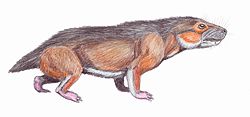Arthropods
Newly named crustaceans
| Name | Novelty | Status | Authors | Age | Unit | Location | Notes | Images |
|---|---|---|---|---|---|---|---|---|
Sp nov | Jr synonym | Harbort | A barnacle, moved to the genus Loriolepas in 2016 . [3] | |||||
Sp nov | Jr synonym | Harbort | Moved to the genus Protastacus in 1983. [4] | |||||
Sp nov | Valid | Harbort | An erymid. | |||||
Sp nov | Valid | Harbort | A lobster. | |||||
Sp nov | Jr synonym | Harbort | Moved to the genus Atherfieldastacus in 2017. [5] | |||||


